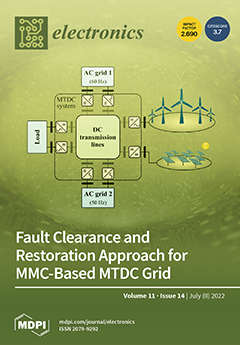During the past few years, software-defined networking (SDN) has become a successful architecture that decouples the control plane from the data plane. SDN has the capability to monitor and control the network in a central fashion through a softwarization process. The central element
[...] Read more.
During the past few years, software-defined networking (SDN) has become a successful architecture that decouples the control plane from the data plane. SDN has the capability to monitor and control the network in a central fashion through a softwarization process. The central element is the controller. For the current SDN architectures, there is an essential need for multiple controllers. The process of placing the controllers efficiently in an SDN environment is called the
controller placement problem (CPP). Earlier CPP solutions focused on improving the propagation delays through the capacity of the controllers and the dynamic load on the switches. In this paper, we develop a novel algorithm called
dynamic feedback algorithm for controller placement for SDN (DFBCP
SDN). DFBCP
SDN is compared with the
varna-based optimization (VBO) towards solving the CPP. We used the VBO as the reference model to this work since it is relatively a new algorithm. Moreover, the VBO extensively outperformed many other existing models. To the best of our knowledge, this is one of the first attempts to minimize the total average latency of SDN using feedback control theoretic techniques. Experimental results indicate that the DFBCP
SDN outperforms the VBO algorithm implemented in two well-known topologies, namely
Internet2 OS3E topology and
EU-GÉANT topology. We observe that for uncapacitated CPP, the DFBCP
SDN outperforms the VBO for Internet2 OS3E and EU-GÉANT topologies by 11% and 9%, respectively, in terms of total average latency. On the other hand, for capacitated CPP, the DFBCP
SDN algorithm outperforms the VBO reference model by 10% and 8%, respectively.
Full article





